How to Measure Flour
Posted by Kathryne Taylor on December 3, 2024
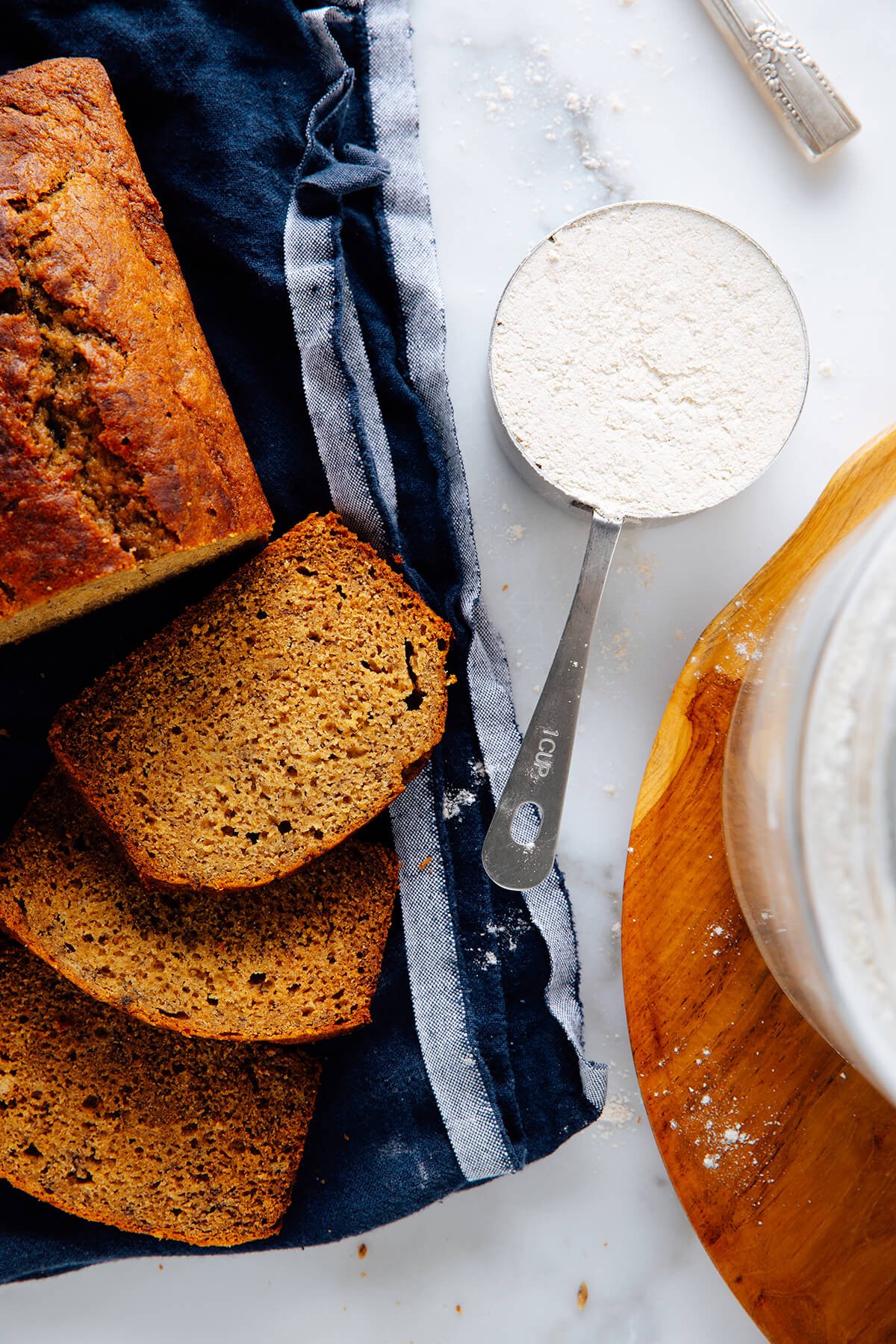
Do you know how to measure flour correctly? If you’re the slightest bit uncertain, this tutorial is for you! To be clear, the best way to measure flour is with a scale, but not all Amerians own a scale.
The second-best method is “spooned and leveled.” All of the recipes on this blog use this method, so I want to share exactly what that means today.
If your baked goods don’t always turn out like the pictures, your measurements might be off. Let’s fix that. With this method, your cookies, muffins, and pizza dough will turn out consistently from batch to batch.


Why does your measuring method matter?
Fact: When you weigh your flour on a scale, you’ll always end up with exactly the same amount. Baking is a science, so this level of consistency is ideal.
When you measure flour by the cup using the spoon-and-level method, the measurements will vary by a few grams, which is close enough to yield consistent results from batch to batch.
However, the measurements can vary significantly if you measure flour by the cup using other methods, and the recipe wasn’t designed for that method. If you scoop the flour straight into the cups rather than spooning and leveling the flour, you could end up with 25 percent more flour.
That’s a lot of extra flour. It will throw off the texture of your baked good, making it dry and dense. It will impact the baking time, requiring more time in the oven to cook through and turn golden on top. The result will taste less flavorful.
Bottom line? Measurements matter!


How to Measure Flour Using the Spoon-and-Level Method
Measuring flour is easy when you know how.
- Stir the flour with a large spoon. If it’s been sitting in your pantry for a while, the flour has settled, and we need to fluff it up a little.
- Working over the container of flour, gently spoon large spoonfuls of flour into your measuring cup until the cup is lightly overflowing. Do not tap the cup to settle the flour.
- Level across the top with the flat side of a butter knife. Let the extra flour fall back into the container. Repeat as necessary.
Watch How to Measure Flour
Other Measuring Methods
Even though this is my preferred method for measuring flour (and King Arthur Flour, Bob’s Red Mill, Sally McKenney and Stella Parks agree), other recipes are designed for other measuring methods.
Some recipe developers like Alison Roman and America’s Test Kitchen use the dip-and-sweep method (scoop the flour straight into the cups and level off the top).
That’s why it’s essential to determine each recipe source’s preferred measuring method before you get started. If measurements are provided in grams, you can bypass the issue by using a scale.


Common Flours by Weight
Here are the most common flours I use in my recipes.
- All-purpose flour: 122 grams per cup (typical range is 120 to 125 grams)
- Whole wheat flour, including white whole wheat flour: 122 grams per cup (typical range is 120 to 125 grams)
- Whole wheat pastry flour: 115 grams per cup (typical range is 110 to 120 grams)
- Oat flour: 88 grams per cup (typical range is 85 to 91 grams)
- Almond flour: 92 grams per cup (typical range is 85 to 100 grams)
Baked Goods to Enjoy
Now that you know how to measure flour correctly, let’s turn on the oven and start baking. Here are a few of my favorite recipes:
- Amazing Chocolate Chip Cookies
- Banana Bread and Banana Muffins
- Pumpkin Bread and Pumpkin Muffins
- Blueberry Muffins and Simple Blueberry Cake
- Easy Whole Wheat Pizza Dough
Please let me know what you think in the comments! I love hearing from you.


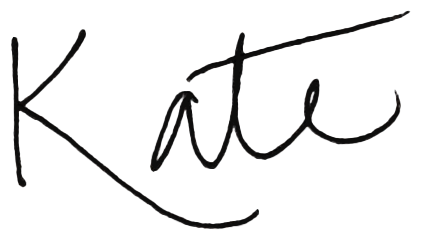
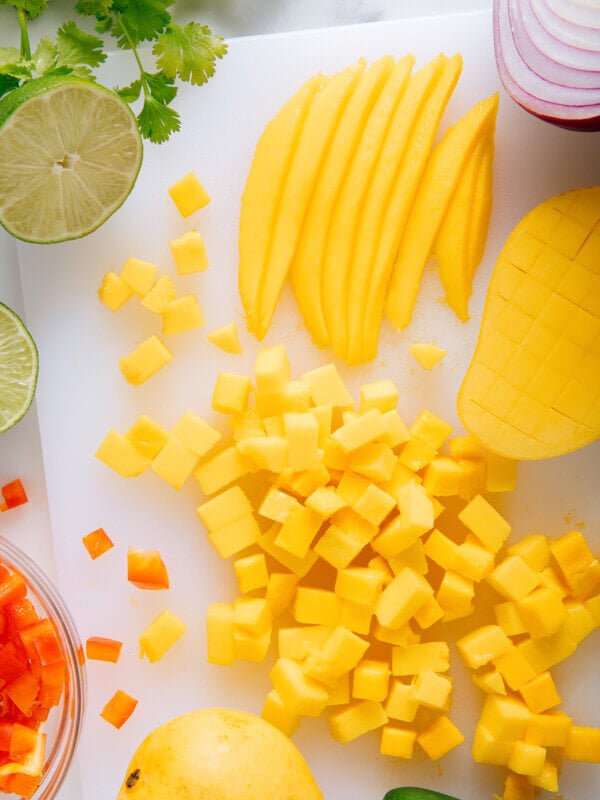
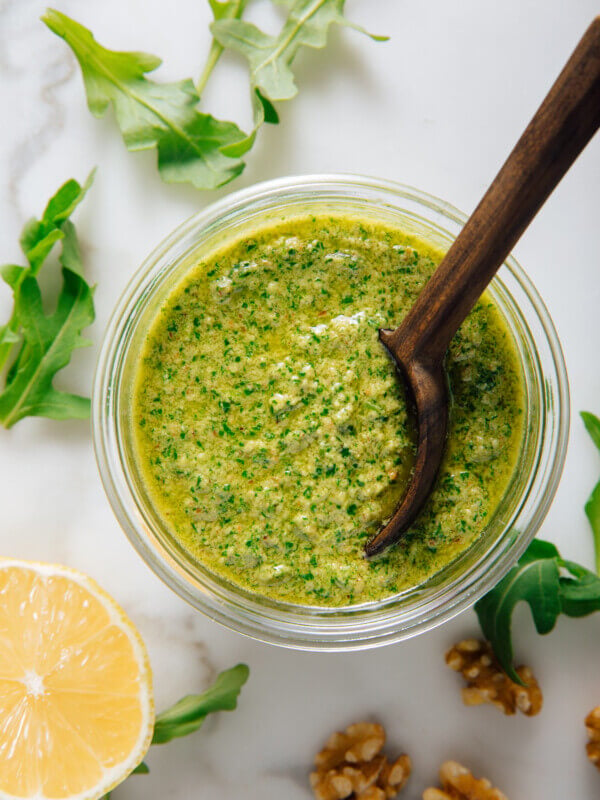
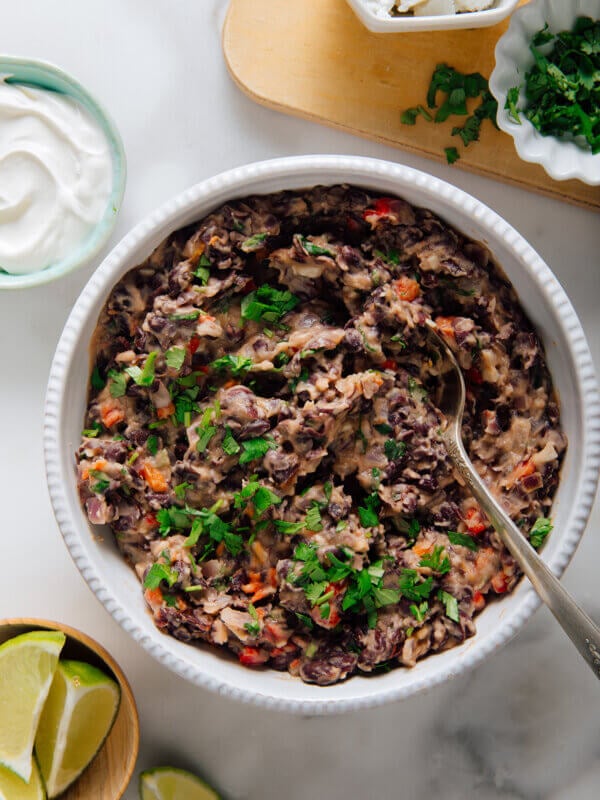
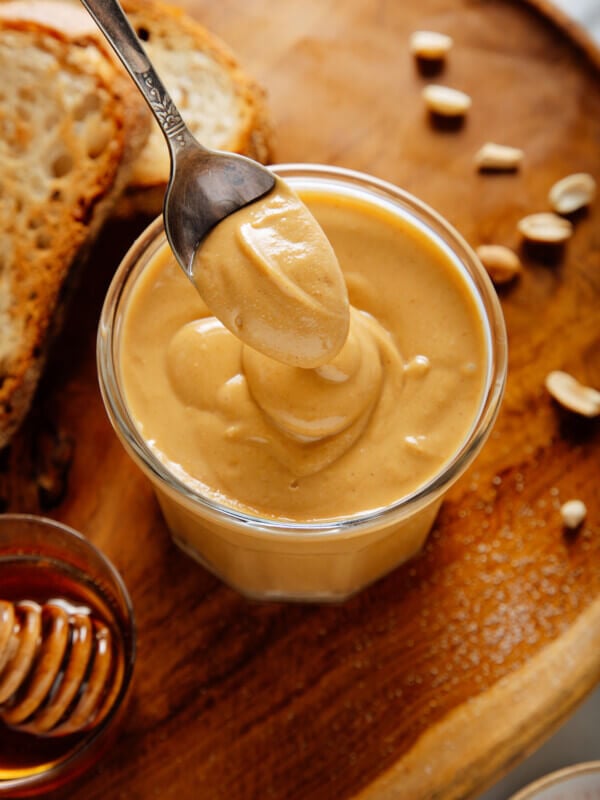








I usually sift my flour into the measuring cup and then level it. This makes the flour light and airy, but probably leaves you with less than the spooning method?
Hi Jen, yes, I’m afraid you might end up with less flour than the recipe intends if you sift it first. Just a few stirs to loosen it up should do the trick.
Enjoyed reading this article about measuring flour. Very helpful. Thank you.
Thanks, Patricia! I’m glad to hear it.
I just measure by weight, seems a lot easier than worrying about how you fill a cup. You can get decent scales inexpensively and I’m sorry I didn’t get one sooner.
I hear you! It really is easier once you get used to it. I especially love my scale for when I’m measuring with my toddler daughter because I know how much to take out of the bowl if she goes overboard. :)
Having worked in an artisanal bakery and been completely converted to using a scale, I bless you for this!!
…Now, if we could just get Americans to go totally metric!
Thanks for all your recipes and guidance in making wonderful food.
Thank you, Laura! You’re welcome! I wish metric measurements and scales were standard over here, too.
One of the big benefits of moving to Europe has been going metric, along with 24 hour time. I bought the scale for making espresso but use it for everything in the kitchen now.
One big downside is that I can’t get some of the ingredients or substitutions in the mouth-watering recipes that Kate posts, especially when the ingredients are Mexican.
Curious as to why metric is somehow a superior way of measuring vs imperial?
Metric is more precise, easier to scale if you need to make a double or half batch, and easier to measure by weight, so it definitely has some pros.
Should. flour be sifted before measuring?
Just stir the flour within its container to loosen it up. That’ll do it!
Thank you! Although this seems like a common sense post I have to say I’ve always wondered if I was measuring my flour correctly. Super helpful post!
Thanks, Arie! I’m glad it was helpful!
I never knew this. Thank you.
You’re welcome, Christine!
Thanks for the tutorial. Now I understand what I’ve been doing wrong all along.
Hope it helps, Mel!
Is the 1:1 gluten free flours the same weight as the white all purpose? Thanks!
Hi Sullivan, good question. I just looked up Bob’s Red Mill 1 to 1 Gluten Free Baking Flour and the nutrition info states that 1/4 cup is 37 grams. 37×4=148 grams for 1 cup, so it seems a little heavier than all-purpose.
I never gave this much thought, thank you for posting. I’ll pay more attention and might consider getting a scale. Though, it seems a bit daunting to know how much each type of flour should weigh. Also, thanks for the many delicious recipes over the years. Long time fan and I can’t believe it’s my first post on your website.
Thank you,
Maria
Hi Maria! Thanks for your note. Most flours weigh around 120 grams per cup. It really is easier to use a scale when weight measurements are provided, so I’ll start incorporating those in my recipes. Have a great day!
Isn’t the dip and sweep method used by America’s Test Kitchen and Alison Roman (whoever that is) the very same as the not recommended scoop and level method?
Yes, you’re correct. There are a couple of different ways to measure and this post shares my preferred method.
I also understand that a UK cup size is different to US. As someone here in the UK it would be nice to have the equivalent. Thank you for this informative article
Hi Mimi, thank you for your note! That is news to me and I found this article informative. It sounds like UK cups are 250 mls and US cups are 240 mls, so there is a slight difference. Bother! Maybe we should all switch over to weighing with scales. :)
Thank you so much for this post. I like to cook using the “pinch here” and “bottlecap-ful” there, but that only works for soups and such. Baking is an exact science and it is not my forte. Maybe now I will have more successes. Thank you!
So true! Hope this helps, Barbara!
Very helpful. But how do we know which method was used in other people’s recipes?Or is it best to always spoon and level?
Diane, that’s a great question, and I wish everyone specified which method they use. This post is my attempt to clarify for all of my recipes and I’ll link to it when I say the flour should be “spooned and leveled.” I think spooned and leveled is the more common approach, but then again, I was surprised that America’s Test Kitchen uses the other approach. If the recipe offers weights and you have a scale, that’s definitely your best bet!
Shouldn’t moisture content also be considered and if so how do I determine the correction to make when adding liquid to the recipe?
Hey Marc, that’s a good question and I’m afraid the answer is beyond me. It might make such a slight difference that it’s not worth adjusting for. Certainly using 20% more flour on accident would impact the moisture level of a baked good.
I never quite understand these posts and instructions when the answer is just a scale. Mine costs less than $10, I’ve had it for years, and I don’t ever need measuring cups. Just zero out and go!
I hear you, Paula! As I’ve gotten accustomed to measuring with a scale, it’s become apparent that the scale is so much easier!
Thursday, Dec. 5, 2024
I’ll have to say, you’ve taught this old dog some tricks. I’ve seen the spoon method but didn’t know that there was a good reason for doing it. I’ll try to remember, the next time I bake. I have always just scooped and leveled. Thanks for teaching this to us. I am supposed to be paying my credit card bill. NO MORE EXCUSES! But I saw this topic in my Emails and could not resist stopping to learn a new trick. News to me anyway. I do vaguely remember my Home Economics Teacher showing us how to measure flour, but just barely. See you in the funny papers.
Alice Reed
Alice, your note made me smile! Thank you!
Not many recipes identify the method for measuring; what’s a baker to do?
Hi Lucy, it really is confusing, isn’t it? I think my way is the more commonly accepted approach, so if the measuring method is not provided, then I’d do the spooned and leveled method.
Thanks!
J’adore vos recettes. Je cuisine tout le temps et j’adore votre blog. Félicitations
Merci beaucoup, Marcotte!
Thank you for posting how to measure flour. I’ve always scooped and leveled. I will definitely try the stir, spoon and level method.
Thank you so much for explaining how to measure flour! It finally makes sense!
Going to make your banana bread recipe this weekend!! Super excited to do this with my 16 year old son!
Thank you again!!
Wendy Obear
Kate, Why are the weights different on the different sites? how do you choose which weight is best? How do convert cups to grams correctly? thank you
Am looking for gluten free muffins or cakes
Hi Bonita, here is the link to the filter category for baked goods and desserts that are gluten free. Many other recipes have instructions for modifying for gluten free diets.